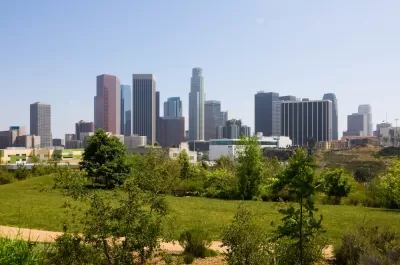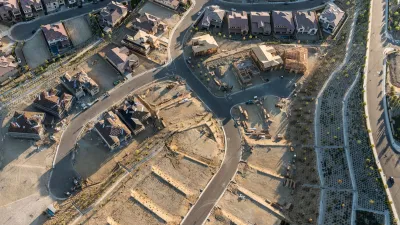A newly released annual report by the Chief Sustainability Office (CSO) shows that Los Angeles County is making progress on meeting the goals of the OurCounty Sustainability Plan.

It has been over four years since the OurCounty Plan was adopted by the Los Angeles County Board of Supervisors. As the first ever regional sustainability plan for L.A. County, it sets forth ambitious targets such as achieving carbon neutrality by 2050, sourcing 80 percent of our water locally by 2045, installing 130,000 new public electric vehicle chargers by 2035, and much more. The Chief Sustainability Office (CSO)'s recently released the 2023 annual report which shows that L.A. County is making progress on meeting the 12 overarching goals of the OurCounty Plan.
Among the highlights from 2022-23 are:
- Passing a landmark ordinance phasing out oil and gas extraction in unincorporated areas of L.A. County.
- Banning polystyrene and single-use service ware at restaurants, which will reduce landfill waste and plastic contaminants in the environment.
- Adopting the County’s first ever Formal Land Acknowledgment.
- Developing the Florence-Firestone Transit-Oriented District Specific Plan to foster connectivity and livability in South L.A.
- Enacting a permanent rent stabilization ordinance securing affordable housing for thousands.
- Releasing the inaugural Los Angeles County Food Equity Roundtable Action Plan.
- Completing and adopting the Parks Needs Assessment Plus (PNA+) as the County's plan to advance park equity, expand land conservation and restoration efforts, and protect biodiversity.
The hard work of the CSO, other County departments, and a variety of partners has resulted in meaningful and measurable improvements in the quality of life for millions of L.A. County residents. To learn more, please read the full report here.
FULL STORY: 2023 Annual Report OurCounty Sustainability Plan

Trump Administration Could Effectively End Housing Voucher Program
Federal officials are eyeing major cuts to the Section 8 program that helps millions of low-income households pay rent.

Planetizen Federal Action Tracker
A weekly monitor of how Trump’s orders and actions are impacting planners and planning in America.

Ken Jennings Launches Transit Web Series
The Jeopardy champ wants you to ride public transit.

California Invests Additional $5M in Electric School Buses
The state wants to electrify all of its school bus fleets by 2035.

Austin Launches $2M Homelessness Prevention Fund
A new grant program from the city’s Homeless Strategy Office will fund rental assistance and supportive services.

Alabama School Forestry Initiative Brings Trees to Schoolyards
Trees can improve physical and mental health for students and commnity members.
Urban Design for Planners 1: Software Tools
This six-course series explores essential urban design concepts using open source software and equips planners with the tools they need to participate fully in the urban design process.
Planning for Universal Design
Learn the tools for implementing Universal Design in planning regulations.
Ada County Highway District
Clanton & Associates, Inc.
Jessamine County Fiscal Court
Institute for Housing and Urban Development Studies (IHS)
City of Grandview
Harvard GSD Executive Education
Toledo-Lucas County Plan Commissions
Salt Lake City
NYU Wagner Graduate School of Public Service





























